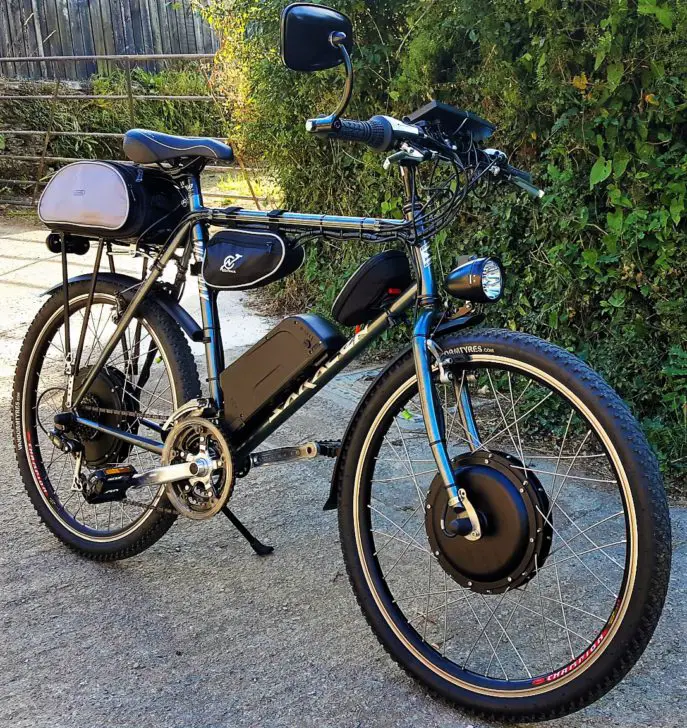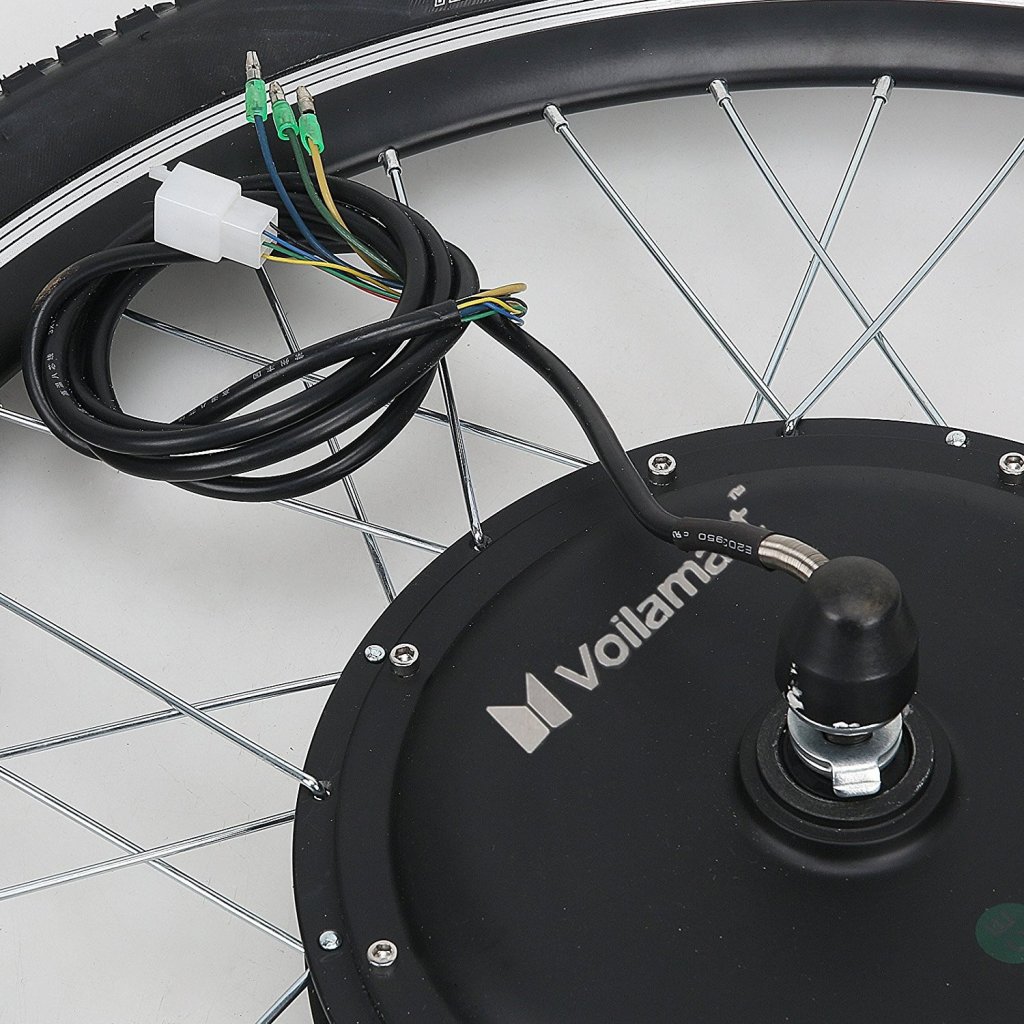Introduction: The Rise of Electric Bike Conversion Kits
In recent years, electric bike conversion kits have gained significant popularity among cycling enthusiasts and environmentalists alike. Converting a regular bicycle into an electric one with a battery-powered motor offers numerous advantages. These include cost-effectiveness, eco-friendliness, and versatility, making them an attractive option for many riders. An electric bike conversion kit with battery can transform your ordinary bike into a powerful e-bike, providing you with an enhanced cycling experience.
Understanding Electric Bike Conversion Kits: Key Components and Features
An electric bike conversion kit with battery primarily consists of four essential components: the motor, battery, controller, and display. These components work together to transform a regular bicycle into an electric one. The motor, typically located in the front or rear hub or the bike’s mid-drive, propels the bike forward. Front hub motors are easy to install but may affect handling due to their weight distribution. Rear hub motors provide better traction but can be more challenging to install. Mid-drive motors, while more expensive, offer better balance and efficiency.
The battery, usually a rechargeable lithium-ion unit, supplies power to the motor. When selecting a battery, consider factors like range, weight, and compatibility. Range refers to the distance the e-bike can travel on a single charge, while weight impacts the overall bike’s weight and handling. Compatibility is crucial to ensure the battery works seamlessly with the other components. Battery capacity is typically measured in amp-hours (Ah) or watt-hours (Wh), with higher values indicating longer ranges.
The controller manages the power distribution between the battery and motor, while the display shows vital information like speed, distance, and battery level. Some displays even allow riders to customize their assistance levels or activate walk-assist modes.
How to Choose the Right Electric Bike Conversion Kit with Battery: A Comprehensive Guide
Selecting the ideal electric bike conversion kit with a battery requires careful consideration of several factors. First, assess your bike type and ensure the conversion kit is compatible with its frame material, wheel size, and braking system. Next, evaluate your riding style, whether it’s commuting, leisurely rides, or off-road adventures, to determine the appropriate motor type and power level.
Budget is another crucial factor, as electric bike conversion kits with batteries can vary significantly in price. While more expensive kits may offer better performance and durability, affordable options can still provide a satisfying riding experience. Additionally, consider your preferred installation method, as some kits require professional assistance, while others can be installed at home with basic tools.
Lastly, familiarize yourself with local regulations regarding e-bikes, as some areas have restrictions on motor power, speed, and usage. By carefully evaluating these factors, you can choose an electric bike conversion kit with a battery that suits your needs and complies with local laws.
Top Electric Bike Conversion Kits with Batteries: Reviewing the Best Products on the Market
When searching for the perfect electric bike conversion kit with a battery, consider several high-quality options. The Bafang BBS02B, a mid-drive motor kit, offers impressive power and torque, making it suitable for various terrains. Its integrated design and compatibility with different battery types are additional advantages. However, it may require professional installation, and its price is on the higher end.
Another option is the Ebikeling 48V 1000W, a rear-hub motor kit. This kit provides ample power for hills and long distances, and its plug-and-play design simplifies installation. However, its weight distribution may affect handling, and it might not be ideal for lighter bikes. Additionally, its battery capacity may limit its range compared to other kits.
When reviewing electric bike conversion kits with batteries, consider factors like motor type, power, and compatibility. Real-life user experiences and expert opinions can provide valuable insights into each product’s performance, durability, and overall value. By carefully evaluating these aspects, you can make an informed decision and select the best electric bike conversion kit with a battery for your needs.
Installing an Electric Bike Conversion Kit with a Battery: Tips and Tricks
Installing an electric bike conversion kit with a battery can be a rewarding DIY project, but it requires careful planning and execution. Start by gathering the necessary tools and skills, such as basic mechanical knowledge, appropriate wrenches, and wire strippers. Familiarize yourself with the installation manual and seek professional assistance if needed.
During installation, ensure proper alignment of the motor and wheels for optimal performance and safety. Carefully route and secure the wiring to prevent damage or entanglement. After installation, test the system to confirm correct operation and address any issues before your first ride.
Potential challenges during installation may include compatibility issues with your existing bike or difficulty routing wiring. Troubleshooting tips include double-checking compatibility, seeking online forums or manufacturer support, and being patient throughout the process. Remember, safety should always be your top priority when installing an electric bike conversion kit with a battery.
Maintaining Your Electric Bike Conversion Kit and Battery: Ensuring Long-Term Performance
Regular maintenance is crucial for ensuring the long-term performance and safety of your electric bike conversion kit with a battery. Begin by cleaning the kit and battery with a soft, damp cloth, avoiding the use of harsh chemicals or high-pressure water. Periodically inspect the motor, controller, and display for signs of wear or damage, addressing any issues promptly.
Lubrication is another essential aspect of maintenance. Regularly lubricate the chain, gears, and other moving parts to minimize wear and ensure smooth operation. Additionally, inspect the brakes, tires, and spokes for signs of wear, and replace or repair them as needed.
Battery maintenance is particularly important for the longevity of your electric bike conversion kit. Monitor charge levels and avoid deep discharges, which can reduce battery life. Store the battery in a cool, dry place, and follow manufacturer guidelines for charging and storage. Regularly inspect the battery for signs of wear, such as bulging or leaking, and replace it if necessary.
Conclusion: Embracing the Future of Cycling with Electric Bike Conversion Kits
Electric bike conversion kits with batteries have revolutionized the cycling world, offering riders a cost-effective, eco-friendly, and versatile alternative to traditional bikes. By transforming your regular bike into an e-bike, you can enjoy a more comfortable, effortless ride while still benefiting from exercise and fresh air.
When selecting an electric bike conversion kit with a battery, consider factors like bike type, riding style, budget, and preferred installation method. High-quality options like the Bafang BBS02B and the Ebikeling 48V 1000W offer impressive features and performance, making them popular choices among cycling enthusiasts. However, it’s essential to ensure compatibility with your existing bike and local regulations before making a purchase.
Installing and maintaining your electric bike conversion kit with a battery requires careful planning and execution. Familiarize yourself with the installation process, tools, and potential challenges. Regular cleaning, lubrication, and inspection, as well as monitoring battery charge levels and storage conditions, will help ensure long-term performance and safety.
By embracing electric bike conversion kits with batteries, you can contribute to reducing carbon emissions, promote active transportation, and enhance your overall cycling experience. Explore the various options available and make an informed decision based on your needs and preferences. The future of cycling is here, and it’s electric!








